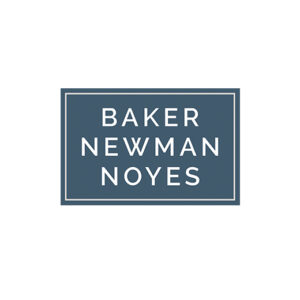Medicare and Defined Benefit Pension Plan Cost… Two Policies Finalized

On August 18, 2011, The Centers for Medicare and Medicaid Services (CMS) puCMS
blished the Medicare inpatient prospective payment system (IPPS) final rule in the Federal Register. Within this document, CMS has finalized two distinct policies related to the measurement of defined benefit pension plan costs (pension costs) for both Medicare cost-finding and the wage index. These policies will be effective for cost reporting periods beginning on or after October 1, 2011.
Pension costs for cost-finding purposes
Pension costs for cost-finding purposes will no longer be based on actuarially determined measurements and will be on a cash basis as opposed to an accrual one. Generally accepted accounting principles (GAAP) will not apply. The long standing liquidation of liability principle will also no longer apply (with the exception of its applicability to the cost reporting period immediately preceding the effective date of this policy).
Basically, allowable pension cost for cost-finding purposes will equal the actual cash basis contribution deposits (net of any that were reflected as a prior cost report period cost) plus any carry forward contributions, subject to a limitation. The limitation is equal to 150 percent of the average actual cash contributions made to the pension plan during the highest 3 consecutive cost reporting periods, ending with the current one. In the case of a new plan, the 5year look back period and/or the 3 year averaging period will be limited to the number of years the plan was sponsored.
Providers will need to:
- Determine cash basis contributions on an annual basis
- Establish a carry forward balance, as applicable, that is updated annually
- Ensure there is no duplication of recognized contributions between periods
- Maintain all necessary documentation to support the cost claimed
Section 2142 of the Provider Reimbursement Manual, Part 1 (PRM-1) is expected to be revised to reflect the changes to CMS policies related to reporting defined benefit pension plan costs for Medicare cost-finding purposes.
Pension costs for wage index purposes
CMS has also recognized the volatility and sometimes instability of its current methodology of recognizing defined benefit plan pension costs for wage index purposes and has revised its policy on this in the final rule. GAAP will not apply to these costs and neither will Sections 2142 or 2305 of PRM-1.
For wage index purposes, allowable pension cost will be calculated as the average cash contributions paid over a three year period, plus any allowable prefunding installment.
The three year period to be used is the current cost report period used in the wage index for the year and the periods immediately preceding and following the current one. CMS makes clear that the 3 year average is allowable even if it exceeds the current period contribution and there is no requirement to demonstrate that the amount satisfies a liability under ERISA or any other actuarial basis. For a new plan, the averaging period will be the number of years the plan was in effect. There are further instructions for plans associated with mergers and/or home offices.
The allowable prefunding installment is equal to the sum of the actual cash contributions made during a period of consecutive cost reporting periods commencing no earlier than October 1, 2002, and ending with the cost report period applicable to the FY 2012 wage index, minus the sum of pension costs already reflected in the wage index for the same cost reporting periods. A 10 year transition policy will allow the inclusion of 1/10th of the prefunding balance in the wage index each year beginning with the FY 2013 wage index and ending with the FY 2022 wage index.
Providers will need to:
- Obtain contribution data from the pension trustee, insurance carrier, Schedule B or SB of IRS Form 5500 and, if applicable, from accounting records documenting allocations among providers
- Retain and make available support for the 3-year average, the prefunding balance and the prefunding installment
- To take advantage of 100% of the prefunding provision, the first installment must be calculated and claimed in the FY 2013 wage index
Applicable sections of the cost report instructions will be revised to reflect the changes to CMS policies related to reporting defined benefit pension plan costs for Medicare wage index purposes.
CMS believes that these two new revised policies simplify and adequately address the different goals of both cost finding and the wage index, where one is to measure actual cost incurred and the other is to measure relative labor costs across geographic areas. It is important to note that the onus is on the provider to both calculate and be able to support amounts claimed in both instances. A full discussion of these two policies is made in the final rule.
For further information, or, if you have questions, please contact your BNN advisor at 1.800.244.7444.
Disclaimer of Liability: This publication is intended to provide general information to our clients and friends. It does not constitute accounting, tax, investment, or legal advice; nor is it intended to convey a thorough treatment of the subject matter.
